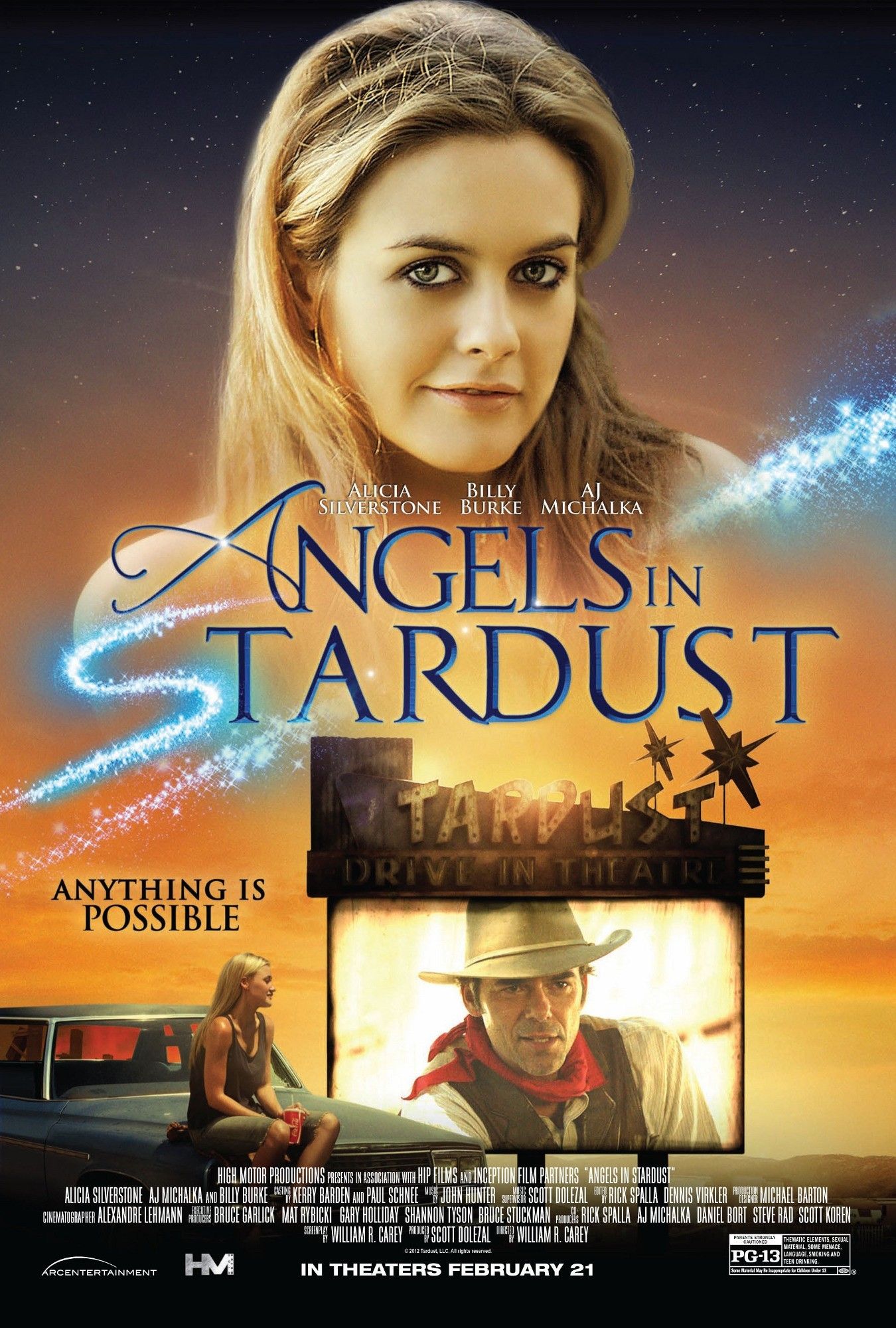 A chronologically ambiguous film with divergent subplots, “Angels in Stardust,†is the visual equivalent of a hanging cuticle. Its disconnection in one direction, in spite of any expectations to the contrary, will never reconnect and in spite of how annoying that may be, the only viable solution thereto would be to cut it before the problem gets worse.
A chronologically ambiguous film with divergent subplots, “Angels in Stardust,†is the visual equivalent of a hanging cuticle. Its disconnection in one direction, in spite of any expectations to the contrary, will never reconnect and in spite of how annoying that may be, the only viable solution thereto would be to cut it before the problem gets worse.
The film primarily follows Vallie Sue (Amanda Michalka), a restless teen growing up in [S]tardust, a town in Oklahoma alongside a drive-in movie theatre, where her spirit guide/conscience (Billy Burke) primarily resides. Vallie Sue, in spite of her restlessness and teenagedness, is not one of the kids making trouble in the back of the school bus, oh no. Vallie Sue is critical of her sexually active peers, verbal about the shortcomings of her friends’ unhealthy relationships and evangelistic in their lack of purity before the eyes of God.
Vallie lives in a trailer park with her brother, Pleasant (Adam Taylor) and her mother, Tammy (Alicia Silverstone). Other residents of the trailer park include a Native American who is a good guy with folksy, spiritual advice (Michael Spears) and even some kooky fellas who seem to think she has purdy lips (Darin Heams and Tyler Riggs).
A lot of things seem to happen in [S]tardust, most of which have nothing to do with one another. Each scene is kind of like its own mini episode with unusual stuff going on that the viewer trusts will connect in the end. To count the consistencies, Tammy is the village bicycle and smokes a lot of cigarettes, she spends much her time being criminally negligent with regards to her children. Vallie is chaste and a model of integrity, if somewhat sanctimonious. Pleasant likes listening to stories that Tenkill, the friendly neighbourhood Native American, has to tell him. All the rest of the town is comprised of various types of unstable rednecks.
The film was aesthetically similar to, “Red State,†and David DeFalco’s, “Chaos,†and possessed the same unpredictable and yet banal dialogue, which added a degree of categorical ambiguity until the end credits. (Spoiler, no brutal rape or murder scenes in this one.)
It is hard to say to whom this film was intended to appeal, although it seems a fair guess that it was an attempt to break the mold on the conventional teen movie. It feels very much like the movie was not given much true effort, in that sense, it feels as if it considers itself a masterpiece. “Angels in Stardust,†is basically Twilight, but the Indian has no abs and the American is not a vampire and is slightly less pale.
Though originality can be a very important point in delivering a picture worth watching, it is thematic originality that creates success. “Stardust,†takes several themes that have already had some degree of success and tries to eschew conventional plot structure. This film might be successful given another medium, such as theatre. However in film closure, clarity and a concise product are keys to a successful piece. When character development is naught and characters randomly disappear from the script willy nilly, (e.g. Francine and Loretta) a change is absolutely necessary to salvage the piece.
One might ask whether the character’s homes were really just a metaphor for the plot and perhaps a more appropriate title for the movie, “Trailer’s Unhitched.â€

Leave a Reply